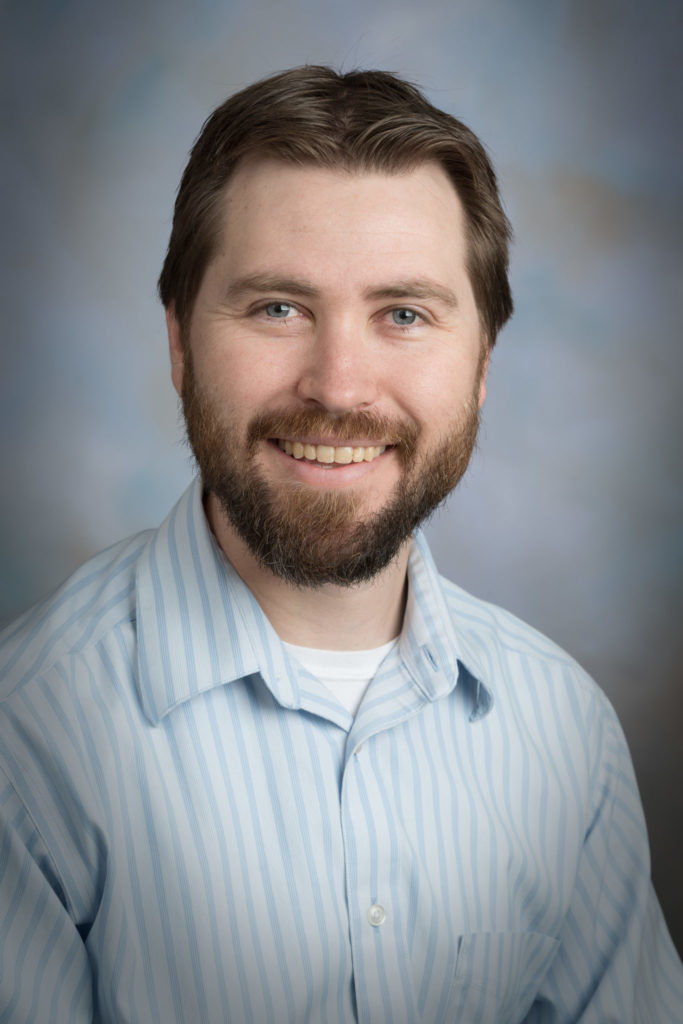Jesse Wilson has always been fascinated with how technology works – and how it can shape a better world.

Now, in his third year as an assistant professor of Electrical and Computer Engineering at Colorado State University, that passion for innovation is pushing him to reach across disciplines to improve human health and fight disease. And two prominent federal agencies have invested in the promise of his research.
Wilson has received the Faculty Early Career Development award, called the CAREER award, from the National Science Foundation for his work to improve the diagnosis and treatment of devastating mitochondrial diseases. He also received a grant from the National Institutes of Health, the world’s largest public funder of biomedical research, to develop advanced imaging tools for general medicine and surgery.
“These awards speak to Jesse’s contributions and potential impact as a rising star in the field,” said Tony Maciejewski, head of the Department of Electrical and Computer Engineering. “He thinks big to solve big problems. I’m impressed with his ability to forge collaborations across a broad range of disciplines to lead research that could one day save lives.”
NSF CAREER award
Building on findings from his study supported by the Boettcher Foundation, the five-year NSF CAREER award will allow Wilson and his team to go a step further in developing noninvasive imaging technologies to diagnose and monitor mitochondrial diseases.
He will work closely with physicians at the University of Colorado Anschutz Medical Campus and the Inherited Metabolic Diseases Clinic at Children’s Hospital Colorado, as well as CSU collaborators Adam Chicco, associate professor of Biomedical Sciences, and Randy Bartels, professor of Electrical and Computer Engineering.
“I want to focus on developing technologies that solve real problems clinicians are having,” said Wilson, who also holds the Lisa and Desi Rhoden Professorship of Electrical and Computer Engineering to support his research and teaching.
Wilson says mitochondria are the reason we breathe oxygen. “They are the power plants of the cells,” he said. But when mitochondria malfunction, they starve cells of energy, leading to diseases that can cause serious complications, from extreme fatigue to vision loss to premature death. Although mitochondrial diseases are rare, there is no cure and they are difficult to diagnose and treat.
Wilson aims to change that. His idea is grounded in vibrational spectroscopy – the focus of his graduate work at CSU in the early 2000s – and transient absorption imaging, the emphasis of his postdoctoral research at Duke and foundation of his ongoing work to develop virtual biopsies for melanoma detection.
His proposed method looks at how electron transport molecules interact with short laser pulses to capture a previously impossible view of mitochondrial energy production. As the study progresses, Wilson will hone the technology by testing the technique on skin cell samples from patients at the Metabolic Diseases Clinic.

Besides representing a potential breakthrough in the measurement and diagnosis of mitochondrial diseases, Wilson’s research could dramatically advance the understanding of how cells use energy. That could have widespread impact on a host of conditions, from cancer to dementia and chronic fatigue.
The CAREER award will also support a new outreach program to introduce middle and high school students to metabolic spectroscopy, highlighting the fundamental nature of light and color, and how it relates to the basics of biology.
National Institutes of Health award
Wilson’s grant from the National Institutes of Health is all about innovation. Rather than tackling a specific disease, the two-year project supports the development of sophisticated tools for a broad range of applications in biomedical research and clinical practice.
Wilson will be working in partnership with co-principal investigator Bartels to create a proof-of-concept technology that could open the door to a new world of noninvasive imaging. Their goal is to leverage the power of transient absorption imaging and complex interferometry to enable a deeper view into biological tissue.
When visible wavelengths pass through tissue, such as skin, laser light does not get far beyond the surface before it is absorbed and scattered. This limits the depth range of transient absorption microscopes. Wilson and Bartels are developing a technique that uses near infrared light to push the boundaries of current imaging depths beyond a few hundred microns. When it comes to biological tissue, Wilson says that distance is not trivial. “It could be the difference between imaging superficial layers of the skin to being able to see down into the dermis,” he said.
In addition to improving medical diagnostics, reaching uncharted depths with noninvasive imaging could offer a new path for studying an array of health conditions, such as tumor metabolism.
A CSU Ram through and through, Wilson earned his bachelor’s, master’s and Ph.D. in electrical engineering from Colorado State. Prior to joining the faculty at CSU, he was a postdoctoral researcher in the Warren Group Laboratory at Duke University.